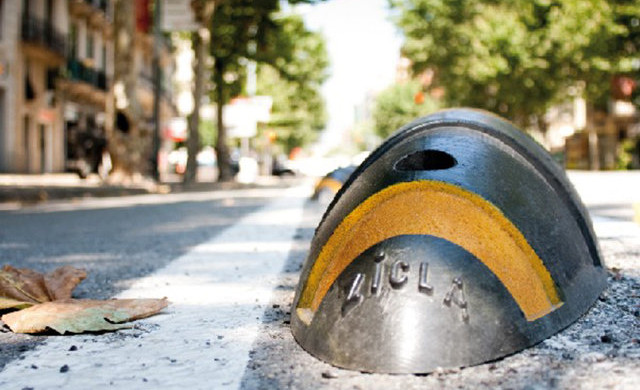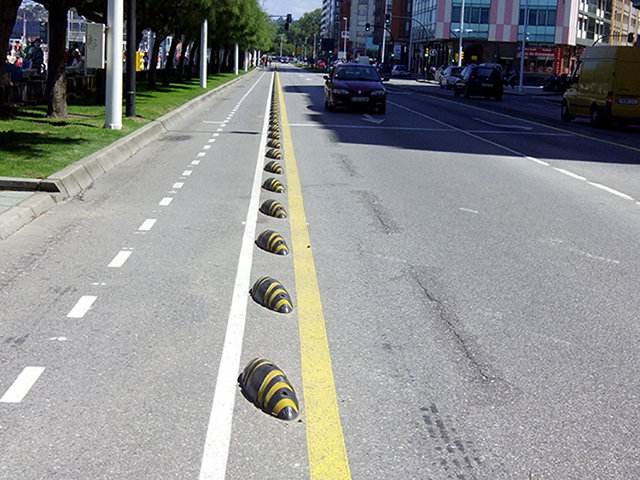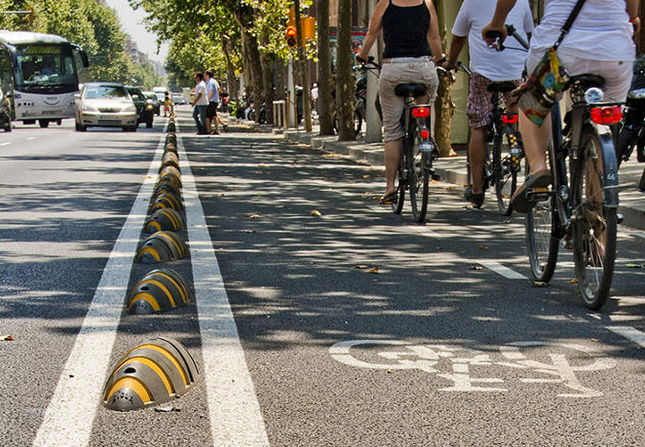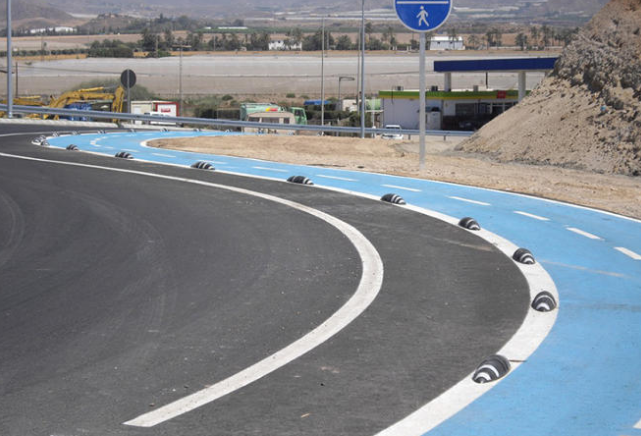
The Armadillo is just a small, gentle bump that reminds cars to stay out of cyclists’ turf. Easy and cheap to install, it could help more cities take the extra step toward more complete streets.
Painted bike lanes are safer for cyclists than riding in the middle of the road, but bike lanes that are separated with a curb are even better. For example, one study found that cyclists in separated lanes had 80% fewer accidents than those in regular bike lanes. But it’s often tricky to convince city governments to take the extra, more concrete step of separation. One product from a U.K. design firm aims to help.
The “Armadillo” is a low-slung recycled plastic bump that can be installed along the edge of a bike lane. Set at an angle, the bumps allow enough space for bikes to ride back out into the street if they need to, something that isn’t as easy with a full concrete curb. But it still keeps cars out.
In cities where bike lanes are routinely ignored–like New York, where cyclist Casey Neistat hilariously documented the number of illegally parked cars along one bike route a couple of years ago–having something like this to physically separate the curb is one way to make lanes more usable.
It’s a gentler reminder to drivers than a concrete curb, says Anthony Lau, managing director at Cyclehoop, the company that makes the product. “They’re not very high, so if a driver strays in the road they’ll just feel a bump and move away from the edge. It’s not like driving over concrete, which would just destroy your wheel.” Ambulances and other emergency vehicles could drive over the separator if necessary.
The Armadillo is also cheaper than concrete dividers, which may make cities more likely to choose them. “In the U.K., cyclists are all asking for cycle lanes, but it’s very hard to get them,” Lau says. “One issue is space, and the other is cost.” The recycled plastic dividers are cheaper in part because installation is so fast– workers just drill a few holes to put one in, and a team of three people can install about 100 meters in a day.
For cities that aren’t quite ready to commit to a long separated lane, it’s possible to put the product in a trial area. In London, the city started testing the dividers in a neighborhood called Camden last year. The street was one of the most dangerous places to ride, but already, bike traffic has increased by 40% to 50%. The Armadillo has also been installed in several cities in Spain, and as interest in bike lanes quickly grows worldwide, Lau says interest in the Armadillo is keeping pace.
“They’re a quick solution, which is what cyclists need right now,” Lau says.









1 Comment
I’m not sure it would be such a “gentle bump” if a cyclist were to wander into one of these.